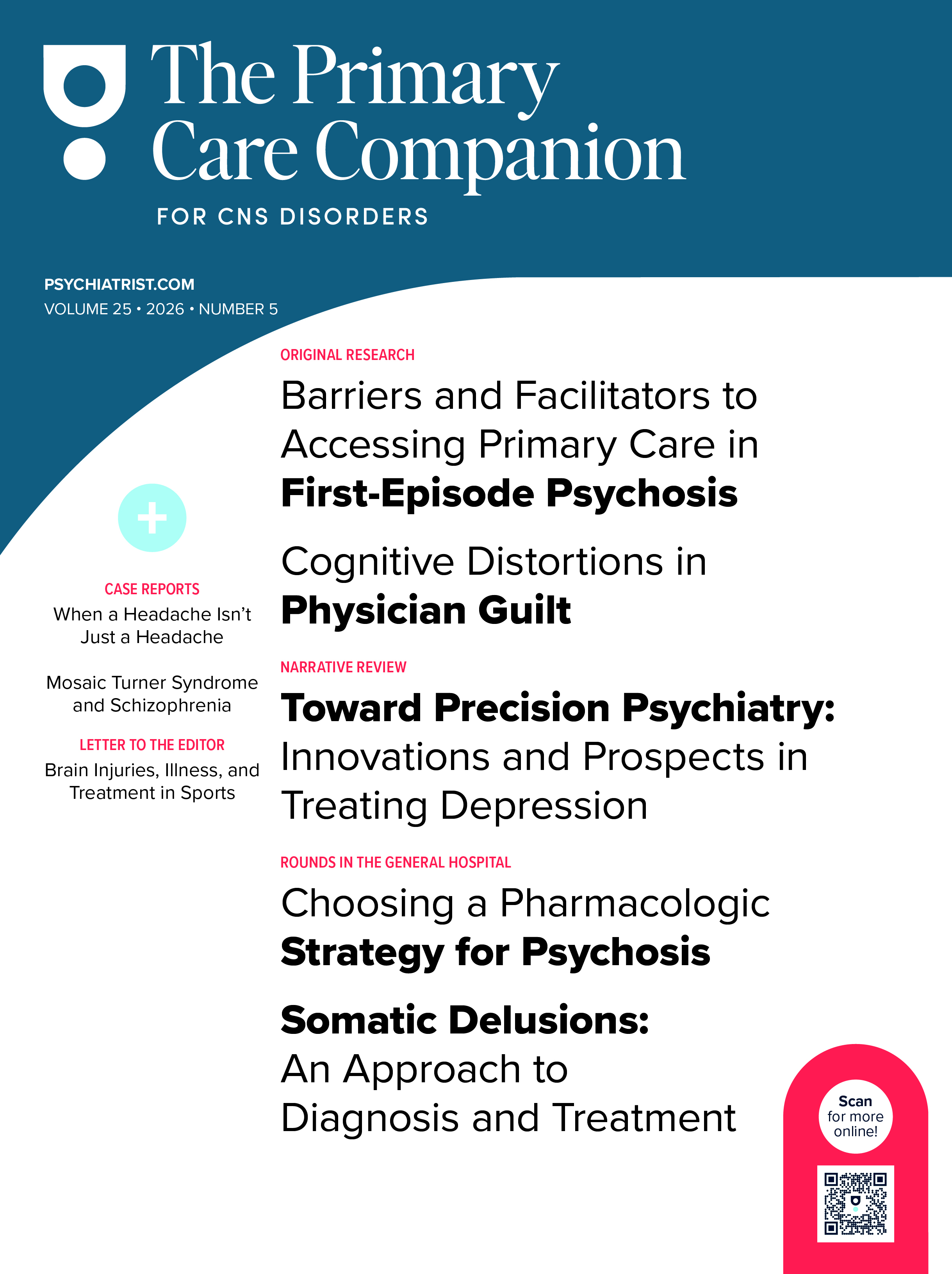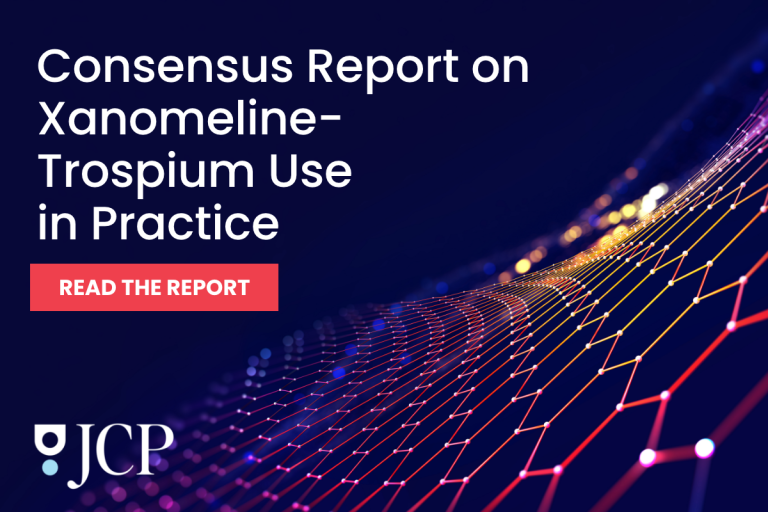Reversible cerebral vasoconstriction syndrome (RCVS) is characterized by multisite cerebral artery vasoconstriction that leads to the sudden development of an intense headache, called a thunderclap headache.1 The diagnosis is established with classic clinical presentation and neuroimaging demonstrating segmental vasoconstriction and vasodilation of cerebral arteries.2 RCVS pathophysiology is uncertain, and most triggers appear unrelated.2 Associated risk factors include but are not limited to pregnancy, vasoconstrictive medications, head trauma, and some cerebrovascular and endocrine abnormalities.1,2 RCVS is most common in females (female-to-male ratio from 2:1 to 10:1), with a mean age of presentation between 42 and 48 years.2 While most recover from RCVS spontaneously, some develop seizures, ischemic infarcts, cerebral edema, intracerebral or subarachnoid hemorrhage, or death.1,2 Given the potential for devastating long-term sequelae, at-risk populations and triggers for RCVS must be identified.
Case Report
A 17-year-old male with a history of attention-deficit/hyperactivity disorder (ADHD), migraine headaches, and bicuspid aortic valve presented to the emergency department (ED) with a 2-day history of recurrent thunderclap headache, nausea, vomiting, dizziness, and blurry vision. He denied head trauma. His medications included amitriptyline for migraine prevention and lisdexamfetamine for ADHD. He smoked marijuana regularly, with last use 2 days prior to admission, but denied other drug use.
Upon presentation, vital signs, laboratory values (complete blood count, complete metabolic profile, and coagulation studies), urinalysis, and viral panels were unremarkable. Urine drug screen was unconfirmed for cannabinoids. No focal neurologic deficits were identified. Head and neck magnetic resonance angiography revealed multifocal areas of mural irregularity and tandem stenosis involving the circle of Willis, anterior cerebral arteries, basilar artery, right posterior cerebral artery, and middle cerebral arteries, suggesting RCVS. Neurology recommended symptomatic management and close observation. Initially, lisdexamfetamine was thought to be the trigger, but the patient later noted that he had not taken this medication for weeks. After 24 hours, he was discharged in stable condition with complete symptom resolution and was advised to discontinue lisdexamfetamine given its vasoconstrictive properties.
Four days later, the patient returned to the ED with recurrent thunderclap headache. Repeat neuroimaging confirmed RCVS. He was readmitted for close neurologic evaluation and symptom management. He reported that his symptoms began shortly after smoking marijuana. After more discussion, it was revealed that his first episode also began after smoking marijuana. His symptoms resolved with supportive care. At discharge, complete abstinence from marijuana was recommended.
Discussion
Our patient, a 17-year-old male, does not fit the classic RCVS patient demographic of middle-aged females.2 A growing body of literature supports an association between marijuana use and RCVS development.Marijuana use is twice as common in males compared to females,3 and it is most common among individuals aged 19–30 years, with 44% in this age group reporting use in the past year and 11% reporting daily use.4,5 A study at a Colorado stroke center found that patients with RCVS secondary to marijuana were more often younger males compared to those with RCVS without history of marijuana use.6 These findings align with the demographic pattern observed in our case, alluding to an emerging demographic for RCVS, which, given the legalization and increasing utilization of marijuana, may become more clinically significant. At the time of this writing, recreational marijuana and medical marijuana use have been legalized in 24 and 38 states, respectively.7 More states are expected to vote on this issue in 2025, likely increasing marijuana usage.7 With increasing marijuana use, we expect increased RCVS cases, with the patient demographic shifting to encompass younger adult males, who most commonly use marijuana. Therefore, RCVS should be considered in young males who use marijuana presenting with headache.
Article Information
Published Online: February 11, 2025. https://doi.org/10.4088/PCC.24cr03824
© 2025 Physicians Postgraduate Press, Inc.
Prim Care Companion CNS Disord 2025;27(1):24cr03824
Submitted: August 1, 2024; accepted October 25, 2024.
To Cite: Pal A, Kasi LS, Roman AA. Unveiling unconventional demographics: reversible cerebral vasoconstriction syndrome in a young male with marijuana use. Prim Care Companion CNS Disord. 2025;27(1):24cr03824.
Author Affiliations: University of Missouri–Kansas City School of Medicine, Kansas City, Missouri (Pal, Roman); University Health, Kansas City, Missouri (Pal, Roman); Rush University Medical Center, Chicago, Illinois (Kasi).
Corresponding Author: Aratrika Pal, BA, Internal Medicine, University of Missouri-Kansas City School of Medicine, University Health, 2411 Holmes St, Kansas City, Mo 64108; 10130 Roe Ave, Overland Park, KS 66207 ([email protected]).
Relevant Financial Relationships: None.
Funding/ Support: None.
Previous Presentation: Poster presented at the University of Missouri–Kansas City UMKC Health Sciences Student Research Summit; March 20, 2023; Kansas City, Missouri.
Patient Consent: Consent was received from the patient to publish the case report, and information has been de-identified to protect anonymity.
ORCID: Aratrika Pal: https://orcid.org/0009-0007-6973-8694; LakshmiS.Kasi: https://orcid.org/0009-0007-2838-0630
References (7)

- Nesheiwat O. Reversible Cerebral Vasoconstriction Syndromes. StatPearls [Internet]; 2023. Accessed March 9, 2024. https://www.ncbi.nlm.nih.gov/books/NBK551723/
- Singhal A. Reversible Cerebral Vasoconstriction Syndrome. UpToDate; 2022. Accessed March 9, 2024. https://www.uptodate.com/contents/reversiblecerebral-vasoconstriction-syndrome?search=reversible+cerebral+vasoconstriction+syndrome&source=search
- Kroon E, Mansueto A, Kuhns L, et al. Gender differences in cannabis use disorder symptoms: a network analysis. Drug Alcohol Depend. 2023;243:109733. PubMed
- Cuttler C, Mischley LK, Sexton M. Sex differences in cannabis use and effects: a cross-sectional survey of cannabis users. Cannabis Cannabinoid Res. 2016;1(1):166–175. PubMed CrossRef
- NIDA. Marijuana and Hallucinogen Use, Binge Drinking Reached Historic Highs Among Adults 35 to 50. National Institute on Drug Abuse website]; 2023. Accessed March 9, 2024. https://nida.nih.gov/news-events/newsreleases/2023/08/marijuana-and-hallucinogenuse-binge-drinking-reached-historic-highsamong-adults-35-to-50
- Jensen J, Leonard J, Salottolo K, et al. The epidemiology of reversible cerebral vasoconstriction syndrome in patients at a Colorado comprehensive stroke center. J Vasc Interv Neurol. 2018;10(1):32–38. PubMed
- State Medical Cannabis Laws. National Conference of State Legislatures. Accessed March 13, 2024. https://www.ncsl.org/health/state-medicalcannabis-laws
Please sign in or purchase this PDF for $40.




